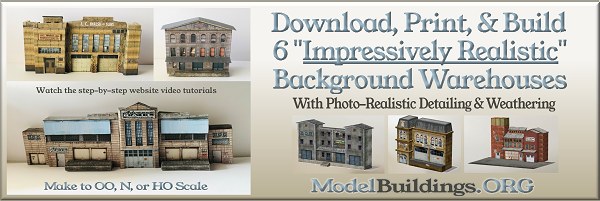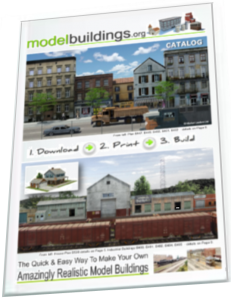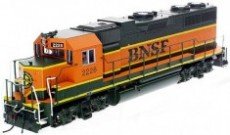Everything on model trains, model railroads, model railways, locomotives, model train layouts, scenery, wiring, DCC and more. Enjoy the world's best hobby... model railroading!
Kato Turnout Switch Controllers
Fred models N scale and sent in these questions:
I like the Kato controllers but would like to place them on a different level than the power packs.
Does a someone make, or show how to make, an extension cable to accomplish this (instead of the standard direct connection)? I guess my real question is does someone sell the proper male & female plugs.
I believe my last question was confusing.
Instead of plugging them into the power pack/transformer directly, I’m looking for a cable that will run from the transformer to the 24-840 switch.
I am controlling 2 turnouts at once in a single situation, but that is on the output side, I’m looking for a cable running from a 22-014 power pack to the row of 24-840 switches on their input side. This is so I can put the controllers on a different level than the power packs.
Getting Kids Interested in Model Trains
Sharon is hoping for helpful getting started advice from those in the know:
“Hi my son who is 12 is trying to start his own OO set. We are both complete novices so would appreciate any help!!! He has got a starter set with a small Great Western engine with a 12 AC controller. He has been given an old Evening Star steam train which have been told works! However not on our track. When reading websites is it something to do with it being DC?? Any help much appreciated. Thanks.”
Help for anyone getting started in model railroading – Beginners Blueprint to Model Trains
Track Bedding Help
Kent lists his scales as HO and N and asks:
“I bought two 8 ft. H x 8 ft. W Spruce Pine Fir Dog-Ear Fence Panels for an eight foot split gate. I have two 8×4 panels. Is it too heavy to work with? Also what about pool table felt for bedding? Green felt for grass? Any thoughts please.”
Logging and Mining Railroad Ideas
Brock hasn’t provided a lot of detail, but hopefully someone can assist:
“I have a HO scale logging and mining railroad. Any tips to make it more prototypical? Thanks.”
Brock can submit a photo and more details using the COMMENTS link below.
Identity of an AF Die Cast Locomotive
Edward has this question for readers:
“I’ve been offered an S scale Die Cast Locomotive. They say it is Atlantic 300. But it has 6 main wheels, none in the front, and none in the back. But the cowcatcher is extended more than average and it has a coupling like a switcher. The body resembles a 342 Switcher. But the 342 switcher has 8 main wheels. And there is no e unit in boiler. Can someone help me identify it please?”
Add your comment below.
Value of Model Train Equipment
As regular readers will know, this blog does not do buy/sell/swap of used model railroading trains and accessories. We leave that to model train shows, and websites like eBay and Craigslist etc.
That said; we are often asked to put a value on how much second hand items might be worth. That’s not something we do. Obviously there are potentially a lot of factors at play including the condition of individual items, the location of the buyer and seller, the likely demand for each item, the cost of shipping etc.
The only real answer is that a secondhand item is worth what someone is prepared to pay on any given day. That’s why a visit to a local hobby shop, or model train club is often a worthwhile way to ascertain the level of interest in an item. Even if they don’t want to purchase the product, they can at least see its condition in real life, maybe test how well it works, give an estimate of what they think someone might pay, and perhaps some advice on how to go about selling it. Talking with vendors at model train shows is another way to gain a better insight.
From a buyer’s perspective; buying second hand goods can be fraught with danger without actually seeing the product and testing it out. But it could also be a golden opportunity to grab a real bargain.
Here’s an example of a recent email from John K. Obviously to protect the privacy of readers we don’t publish email or physical addresses or phone numbers, but readers can post an opinion on this blog of what they think these items might be worth if sold privately.
John who models 3/16 scale wrote: “I have one instruction book 1954, 20 curved sections of track, 6 strait sections, 2 696 track trip, 1 704 manual track trip, 1 overpass 24 pieces, 1 steam engine and tender needs repairs, 1 flatcar with logs, 1 empty car, 1 caboose 938, 1 industrial crane browning hoist 944, 1 road sign with sound, and 1 transformer. Is there any value to this set and how much should I advertise it for?
Will the Curves be a Problem?
Ron asks readers for help:
“My n scale lay out is 24in x 48in. I am using Atlas N scale code 80 track. The curves are Atlas code 80 11 in radius. I would like to run Bachmann 2-6-2 prairie standard dc -union pacific # 1838-n-160-51571 steam locomotive. Will there a problem with the curves? Thanks.”
A Double Crossover or a Double Crossover Switch?
Liam sent in this question:
“My question is similar to one Anthony asked. My confusion is between a double crossover and a double slip switch. What’s the actual difference between them, and where would I use each of them?”
Add your comments below.
If you would like to have your question on this blog (10,000 readers weekly), use the ‘Ask A Question’ link below each posting.
What’s the Correct Dimension for a Helix?
Regular contributor Kevin has helped so many others with their model railroading problems, and now he is hoping someone can help him out:
“I usually model in HO but I have been given an N gauge layout with 2 engines, 3 passenger cars, and 9 freight cars, about 30 meters of new track, plus some set track curves. Now having never had anything to do with N gauge, so I am asking N scalers what is the best diameter for a Helix? I want two and I have a meter at each side of the doorway into a rook 3m X 4.2m. I was thinking about a 2% rise? Also, the cars have Rapido couplers and the engines have knuckle couplers. It looks like I will have to change the couplers on the various cars? If so what are the best knuckle couplers to use? Thanks.”
If you can advise Kevin, please use the COMMENTS link below to add your comment or answer. If you just want to view the comments and answers as they roll in, you can see them by using the same link.
Free Catalog – Download it Now
If you haven’t already downloaded and printed out your copy of the Model Buildings Catalog – now’s the time to do it. It’s a handy resource to keep alongside your layout.
This catalog not only includes photos of 160+ plans to download, but also includes some useful construction tips and links to some excellent resources. It’s available now from http://www.modelbuildings.org/Free-Catalog.html
What Size Should Mountains and Hills Be?
Graham from Australia models N scale and sent in this question for those in the know:
“Please help as I am in process of designing a mountain to scale which is a highlight of my area the trains run in both directions. One goes around the other goes through the mountain. I am having trouble getting my layout to be as the real thing with the gradients. I operate in N scale so any ideas of the best way to address the above would be appreciative. “
Fitting Different Brands of Track Together
Jim has this question for others in the hobby:
“I just got into HO trains, My late brother’s set is now mine. He has a lot of different track, and trains. I want to put his set back together but some of this track is in bad shape, he had Atlas, Power loc, and Bachmann and it does not fit together. Is there any adapters to make this work? Which brand is best for a beginner? Should I just buy all new track? If so which?”
















